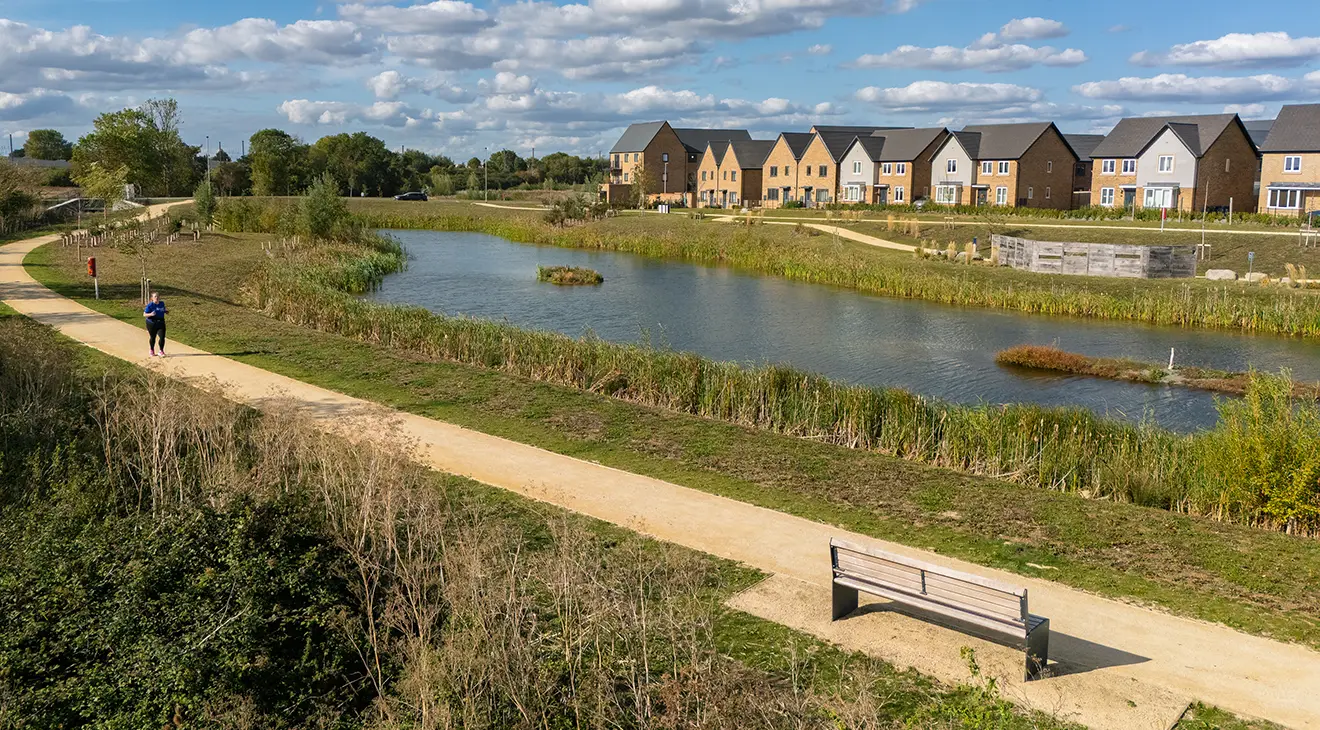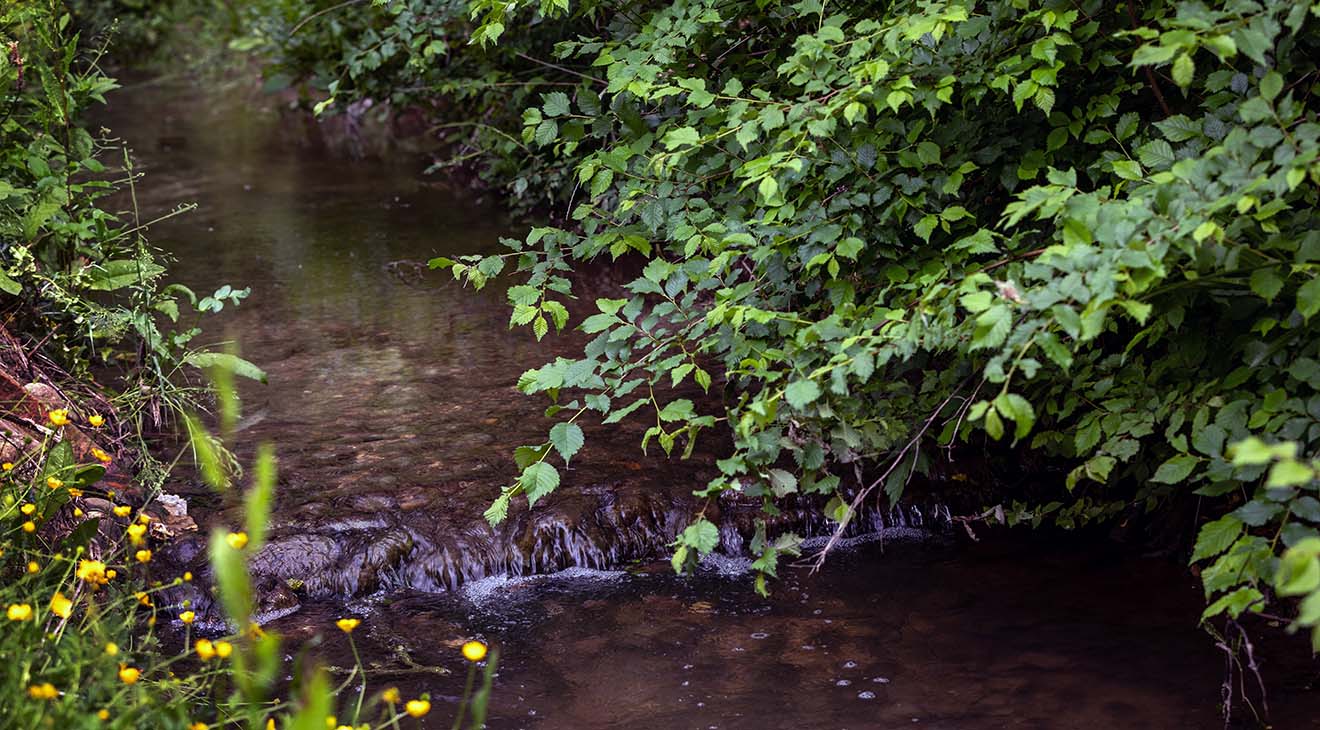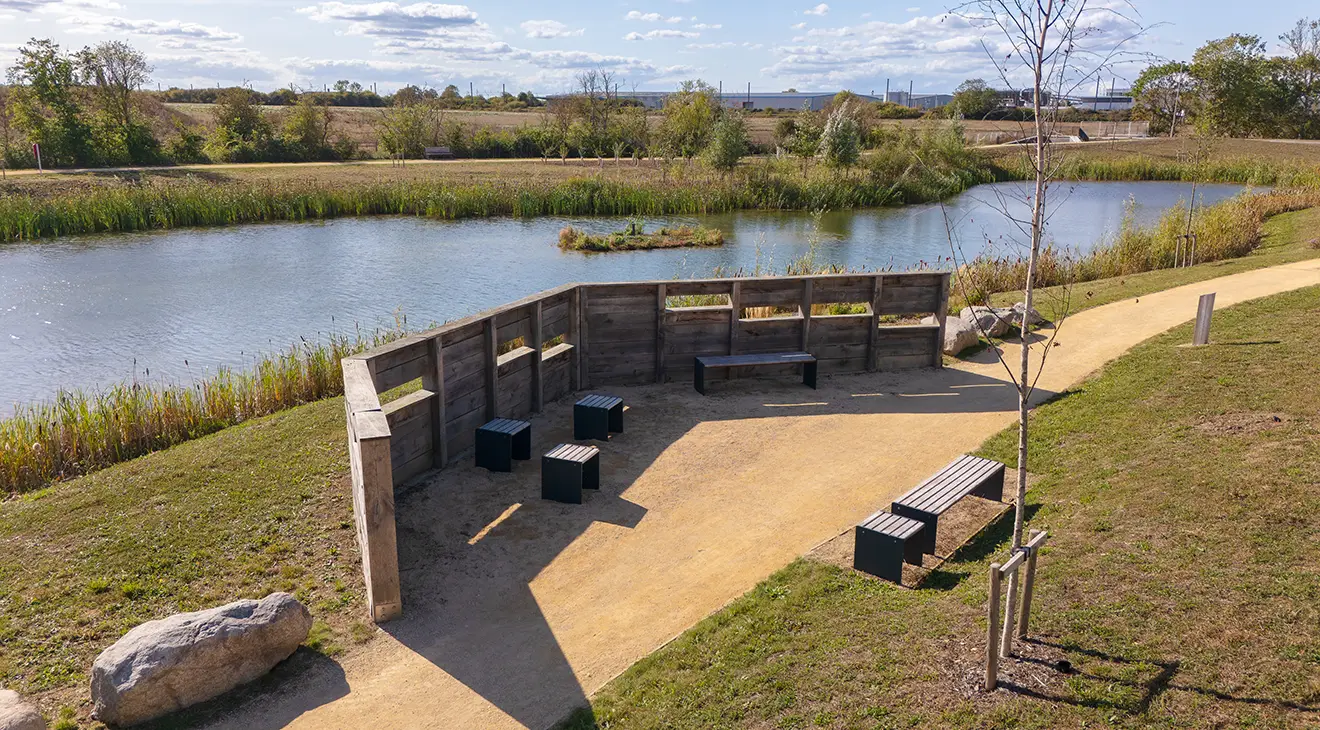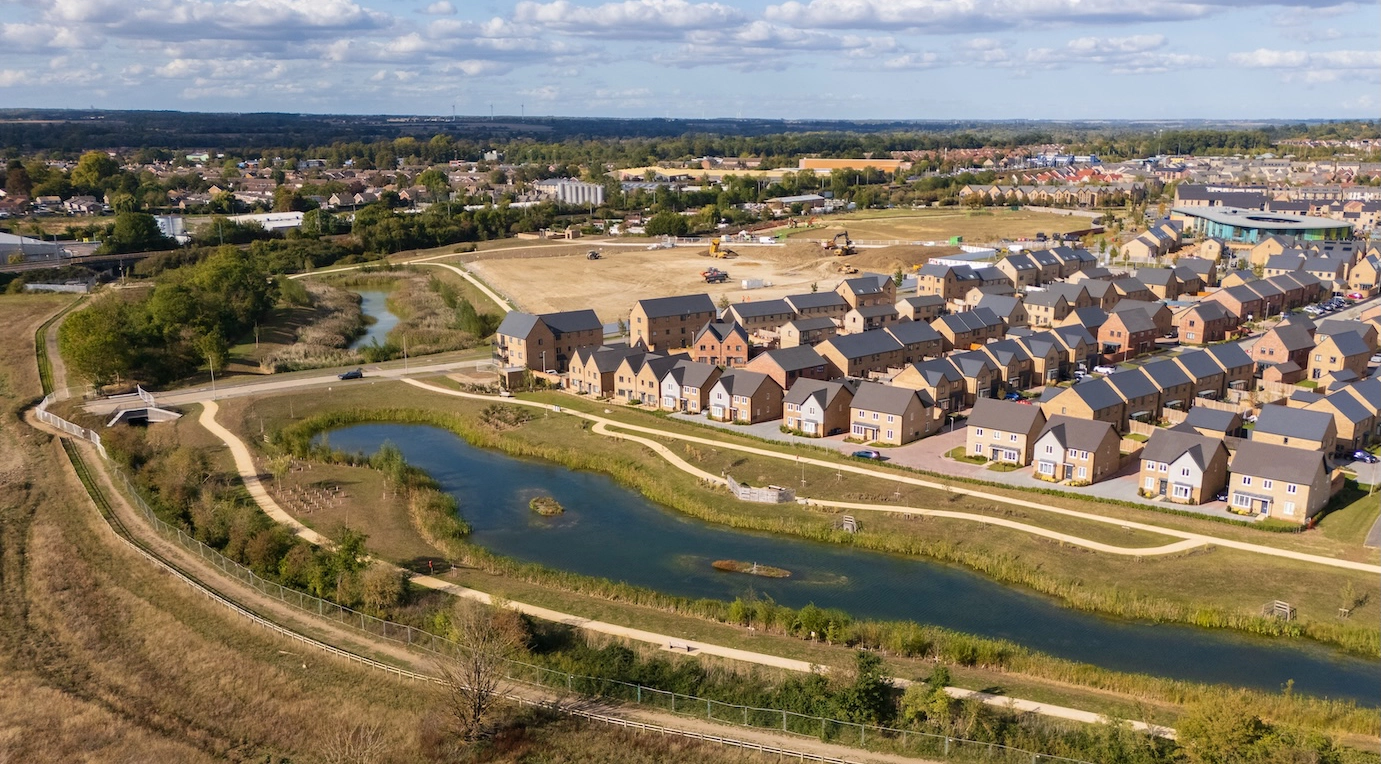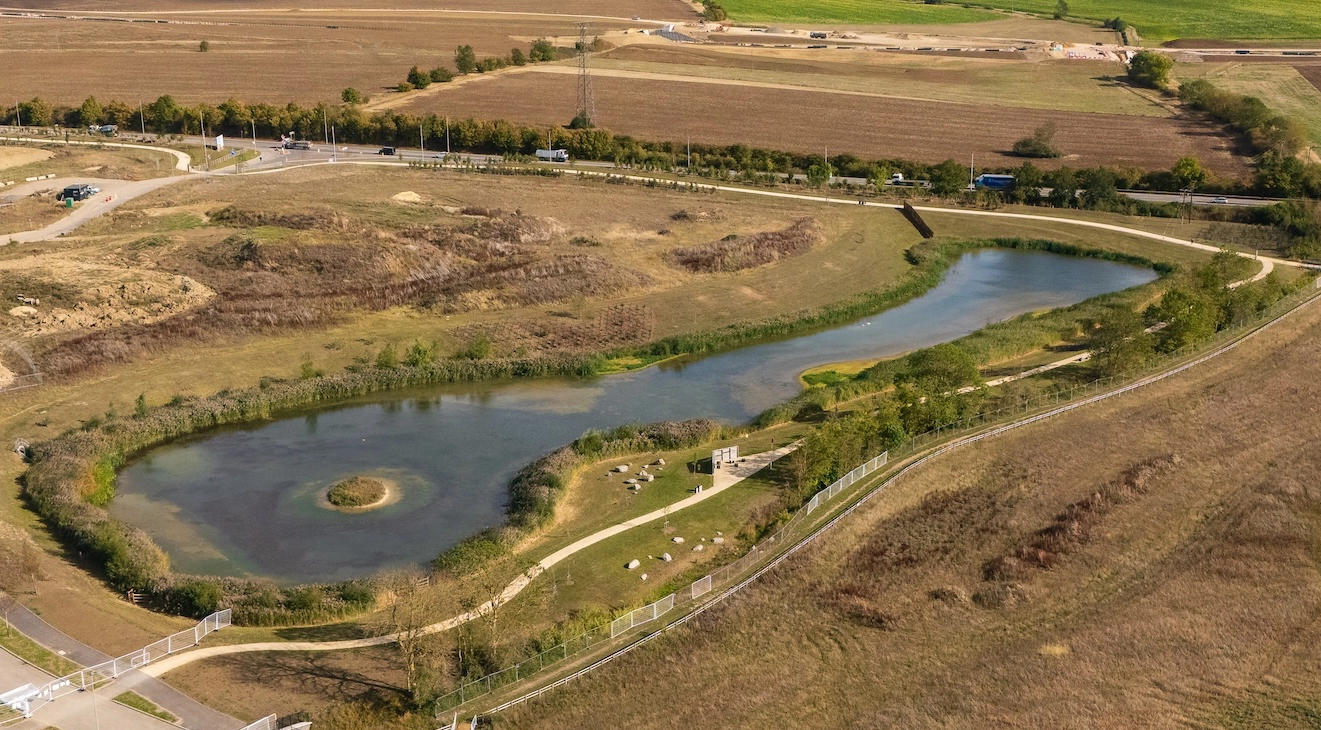
Nature at Wintringham
The historic water courses running east to west at Wintringham, work with new north-south green corridors, to provide a nature-led setting: ensuring space for all Wintringham’s inhabitants, whatever their size and species.
Enjoying nature
A mosaic of habitats at Wintringham provide access to nature, with enhancements to the natural environment and creation of engaging spaces for people to enjoy watching and interacting with wildlife.

Enhancing brook corridors
Work on Wintringham Brook started after extensive discussions with Wildlife Trust Beds, Cambs and Northants. It required the clearance of flytipping; reprofiling the river bottom and banks to create areas of deeper and shallower water; and holding back the flow of water to support specific habitats along the banks.
Areas of the banks were opened up to provide more light and space, and enable people to interact with the historic brooks in key locations, close to the footpaths and seating areas.
Wildlife supported
Sunny sheltered spots near the water attract reptiles such as the Common Lizard and Adder. The grassland, wetland, and woodland habitats support a range of birds, including the Reed Warbler, Lapwing, Little Egret, and Kingfisher.
The shallow waters and moisture-rich soils will provide breeding grounds for Common Frogs and Common Toads, while habitat shelves along the brook support larger mammals like otters: providing resting, foraging and potentially breeding areas. Smaller species like hedgehogs and field mice benefit from the grassland and planting around the edge of both the brooks and new water features.
Tree thinning and the planting of more diverse tree and shrub species supports insect life, which in turn provides food for bat species. Wildflowers in the wet grasslands and native scrub will attract pollinators such as Bumblebees, Honeybees, and butterflies like the Peacock and Red Admiral.
Wintringham Brook Corridor
Wintringham Brook Corridor provides a serene yet dynamic mosaic of wetland, grassland and woodland habitats supporting a range of wildlife:
- Wintringham Brook is an historic watercourse that has been enhanced for wildlife and to bring people closer to nature.
- Monks Brook, a tributary of Wintringham Brook, has been realigned and planted to promote biodiversity and connect parklands.
- Wintringham Waters comprises three new ponds with unique characteristics that support and enhance the ecological dynamics of the corridor. Gravelled and grassed islands provide safe nesting spots and feeding opportunities for birds, with hides located on the water edge to enable visitors to observe wildlife discreetly without causing disturbance.
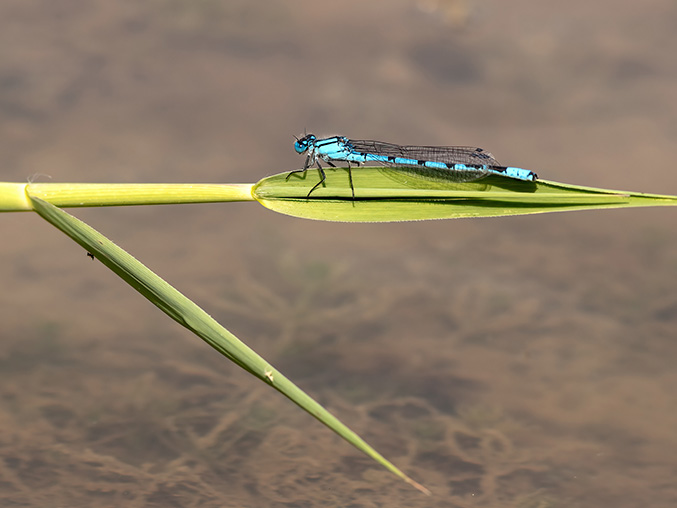
Wintringham Waters
Alongside the historic brook, a whole new series of manmade ponds have been created to ensure surface water management is robust for the changing climate. While these are predominantly for water management, you can find out more about how they have been designed and delivered to support multiple sustainability benefits, and play their part in enhancing this historic brook corridor.
Hen Brook Corridor
Hen Brook Corridor is the larger southern watercourse, that will be enhanced in the second phase of the development, taking a similar approach to the improvements carried out on Wintringham Brook. The detailed plans will be shaped with the Wildlife Trust to include similar measures which provide places to nest, feed and rest for wildlife, including work to the river floor and banks to create faster and slower areas of water flow.
The work will also open up areas for people to get closer to water and nature, both at Wintringham and within the wider River Ouse network.
Railway Field
While Railway Field sits within the second phase of development, it was identified in early partnership discussions as the plans were being evolved, as an important habitat to retain and enhance within the new development. As the area had not been managed for a while it has been under a management regime to improve its condition, ahead of it being opened up within the second phase of development.
The unique environment of the area has been created by the carving of the railway through the natural soils, creating a chalky grassland setting that became a haven for nature.
Harrowing has taken place to help break up and aerate the soil, improve water filtration, remove thatch and reduce grass dominance, which encourages the growth of a wider variety of plant species. Enhancements will improve the biodiversity and stability of the Railway Field includes a mix of native flowers such as Oxeye Daisy, Field Scabious and Common Knapweed, as well as grasses such as Crested Dog’s-Tail and Red Fescue.
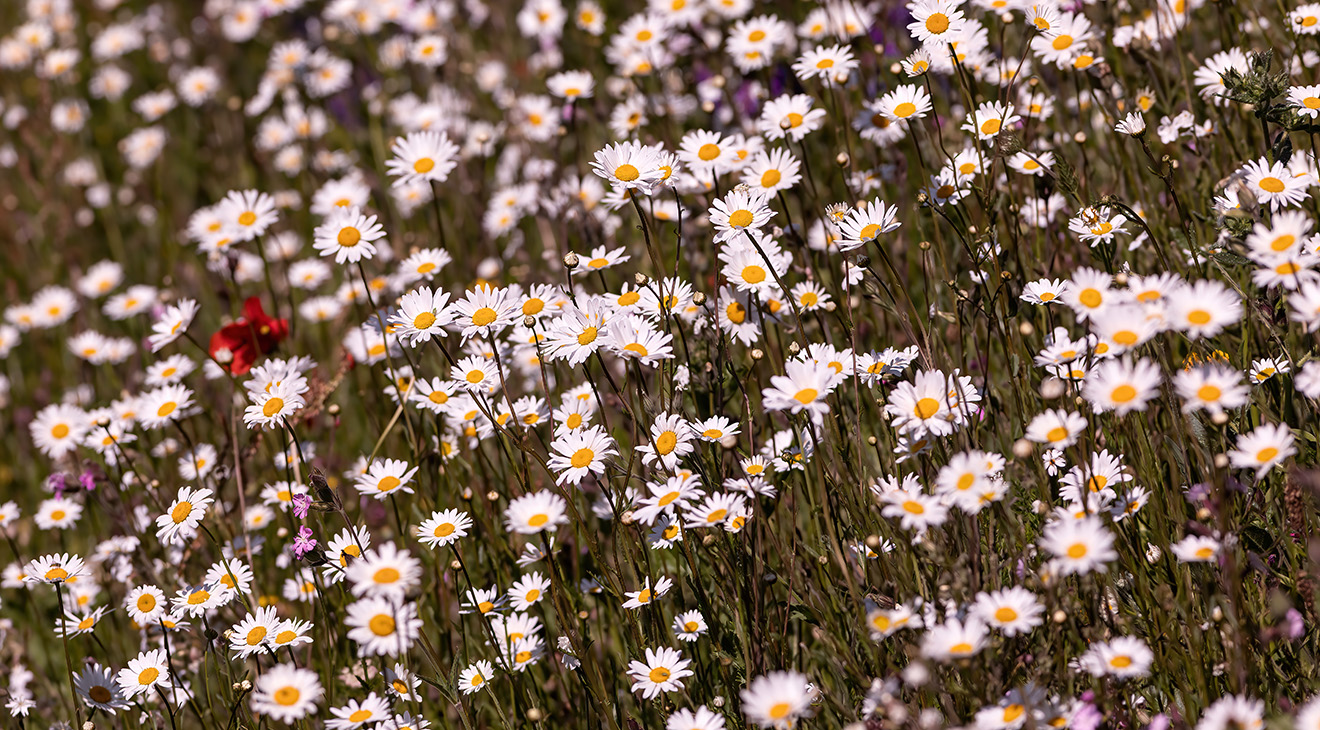
Wildlife supported
The area has been home to the rare White Spotted Pinion Moth, which was historically prevalent because of the elm woodland across Huntingdonshire. It is hoped the enhancements of this area will provide space to increase numbers and engage the new community in some of Huntingdonshire’s most important butterfly species.
The area also supports reptiles including the Common Lizard.
The mosaic of grassland and scrub that will be enhanced will also attract and support a wide range of bird species, and other butterflies and bees will be attracted to the flowering plants. The mix of grassland meadow and water edge habitats will provide attractive spaces for foraging for small mammals like field mice and voles, which in turn may attract larger predators such as owls and foxes.

Continuing our work with nature
In Phase 2 of Wintringham, new ponds, swales and meadows will expand the variety of habitats. This approach will continue to explore nature based solutions, connecting blue and green corridors for people and nature to enjoy.
